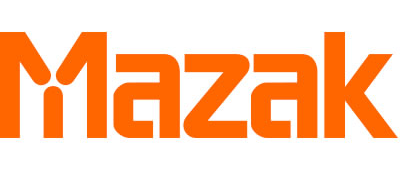After a hiatus as a result of the pandemic, Florence, Kentucky-headquartered Mazak Corp. hosted the Discover More With Mazak Midwest Technology and Education Event May 6-8 at the machine tool builder’s Midwest Technology Center in Schaumburg, Illinois. In addition to being able to meet with Mazak partner companies in the display and demonstration area, Mazak presented a variety of machining equipment, including Integrex multitask machines, Variaxis 5-axis machines for producing complex 3D curved surfaces, Syncrex Swiss-style turning machines, the HCN-4000 NEO horizontal machining center with the Palletech modular automation system, and the VC-500A/5X 5-axis hybrid machine that combines additive and subtractive operations.
In addition, the event featured several presentations May 6-7, including “Looking Forward – Manufacturing 2025” by Dan Janka, president and CEO of Mazak Corp. He noted that the company entered the U.S. market in 1968 and began building machine tools in Florence in 1974 and now builds 70 different models at the 1 million sq.-ft. facility. The plant is one of 11 Mazak factories around the globe, with the most recent one started about a year ago in Pune, India.
To help its customers minimize downtime, Janka said 98% of all North American parts receive same-day shipping.
One trend he mentioned is the continuing increase in automation, with more activity that he has seen in the manufacturing industry over the past four decades to address the shortage of skilled workers. To help address that issue, the Geneva, Illinois-based Greater Chicago Advanced Manufacturing Partnership (GCAMP) had a display to promote the nonprofit organization’s effort to create a sustainable manufacturing workforce in the Greater Chicago region.
In his remarks about the economic and industry outlook, Janka noted that after manufacturing experienced a recession in late 2023 and into 2024, the situation turned around when durable orders surged in March by 9.2%. The gain was driven by transportation equipment, especially commercial aircraft. Aircraft production is expected to grow at a 5.7% compound annual growth rate over the next 10 years.
Janka added that Boeing has to rebuild its supply chain and needs to double airplane output to 50 planes per month. “We will see significant investment.”
This year will be a good one for the oil and gas industry, according to Janka, as the current U.S. administration focuses on energy independence and lower costs, shifting from the previous administration’s emphasis on climate change. Another industry poised to grow is construction.
Overall, the outlook for manufacturing in 2025 is about 3% growth compared to a 1% decline last year, he said, noting that a lot of reshoring has been occurring since COVID. “It’s a good time to invest in manufacturing.”
Although he said the administration’s shifting tariffs have given him “whiplash, don’t hit the panic button. We will be OK.” The tariffs are a negotiating tool to balance trade, according to Janka, and he expects tariffs to level out and possibly zero out over the next 60 days. “There’s nothing to indicate we’re heading to a recession.”
Janka added that the tariff strategy is to make deals with countries such as India, South Korea, Japan and Australia, and the situation will be difficult for China if those deals are negotiated.
In his outlook on emerging technologies, Janka listed advanced materials, artificial intelligence and machine learning, augmented/virtual/mixed reality, and cognitive automation, such as a robot with reasoning capabilities to assemble circuit boards.
Regarding more conventional automation, the working population of 20- to 65-year-old people is insufficient to fill available jobs in the manufacturing workplace over the next decade, Janka said. Therefore, collaborative robots as plug-and-play solutions are becoming more popular but are not replacing workers because there are not enough of them already.
In addition, he said cybersecurity will continue to remain a critical need for manufacturers as North America is the target of 23% of the world’s cyberattacks, with manufacturers accounting for 28% of that total — the most of any industry. About 30% of those attacks are in the ransomware category, an attractive type of attack due to the industry’s low tolerance for downtime.
Janka pointed out the role Mazak’s SmartBox technology plays for security, data collection and edge computing, with the device’s ability to support up to 10 machines for MTConnect monitoring. “Mazak continues to update MTConnect adapters to make sure customers are getting as much data as possible from their CNCs.”
Contact Details
Related Glossary Terms
- machining center
machining center
CNC machine tool capable of drilling, reaming, tapping, milling and boring. Normally comes with an automatic toolchanger. See automatic toolchanger.
- tolerance
tolerance
Minimum and maximum amount a workpiece dimension is allowed to vary from a set standard and still be acceptable.
- turning
turning
Workpiece is held in a chuck, mounted on a face plate or secured between centers and rotated while a cutting tool, normally a single-point tool, is fed into it along its periphery or across its end or face. Takes the form of straight turning (cutting along the periphery of the workpiece); taper turning (creating a taper); step turning (turning different-size diameters on the same work); chamfering (beveling an edge or shoulder); facing (cutting on an end); turning threads (usually external but can be internal); roughing (high-volume metal removal); and finishing (final light cuts). Performed on lathes, turning centers, chucking machines, automatic screw machines and similar machines.


